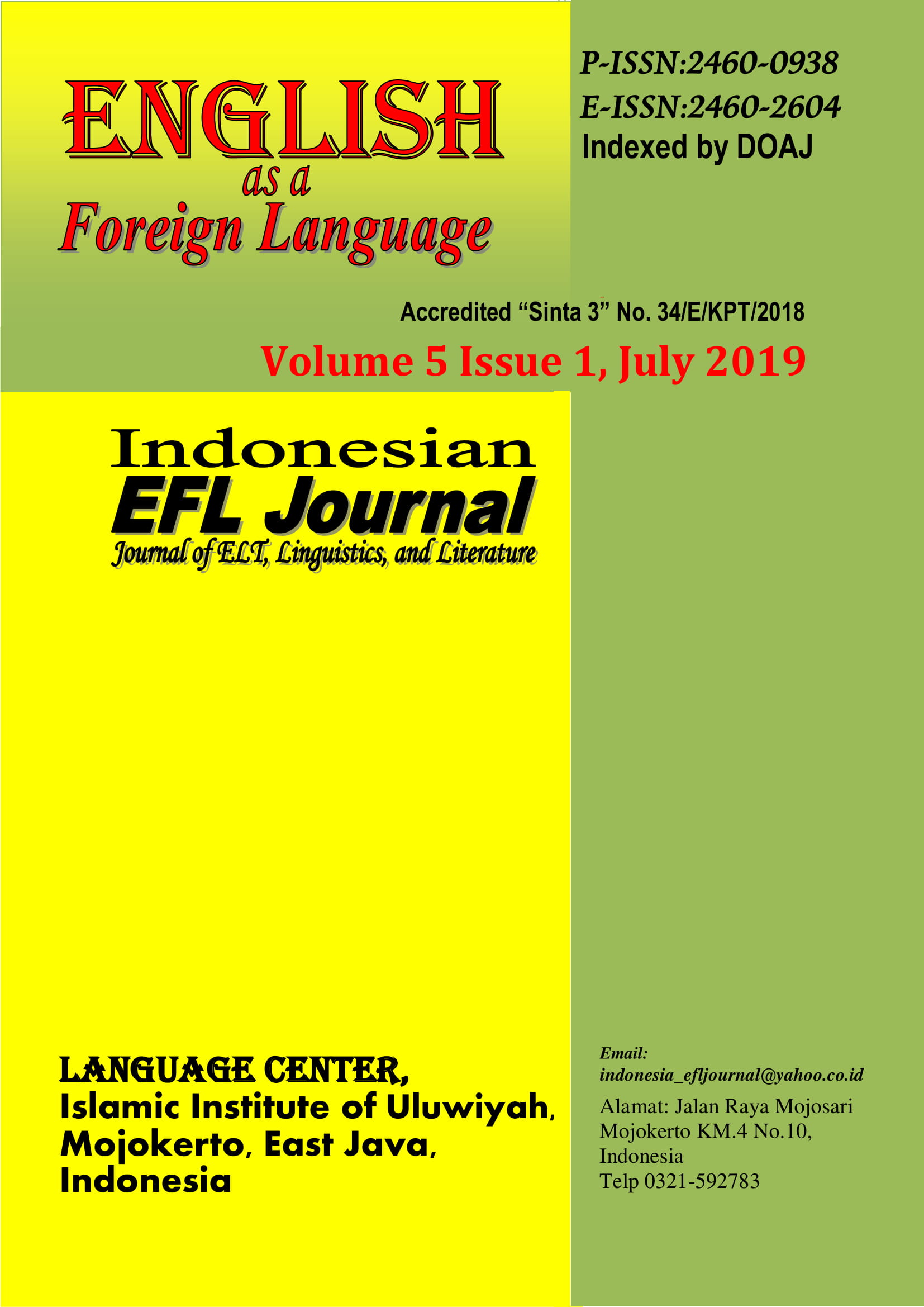Determining the Quality of English Teacher-Made Test: How Excellent is Excellent?
Abstract
Many studies have been conducted on evaluating the quality of a teacher-made test. Item analysis is crucial for making a good test, and improving test items. In response to the advantages of item analysis, this study looks at the theoretical and practical benefits of item analysis. The objectives were to know and to describe the extent of the quality of the English test items concerning difficulty level and discriminating power. This research used descriptive quantitative analysis. A total of 171 respondents of second-year students at MAN 1 Kota Tangerang Selatan 2017/2018 academic year were included in this study. The findings indicate that the English mid-term test has 24 acceptable items (80%) from the quality excellent, good, and satisfactory. Then, three items (10%) have poor quality, and three items (10%) have very poor quality, or in the negative value on discrimination index to the extent that the items are eliminated. It is proven by statistical data that they fail to distinguish between students who are knowledgeable and those students who are not on the base of how well they know the materials that have been tested.
References
Boopathiraj, C. a. (2013). Analysis of Test Items on Difficulty Level and Discriminating Index in the Test for Research in Education. International Journal of Social Sciences & Interdisciplinary Research, 2 (2), 189-193.
Desheng, C. a. (2013). Testing and Evaluation of Language Skills. Journal of Research & Method in Education, 1 (2), 31-33.
Education, C. D. (2004). Key Elements of Testing. Department of Education State of California.
Foyewa. (2015). Testing and Evaluation in English Language Teaching - A Case of O Level English in Nigeria. International Journal of English Language Teaching, 3 (6), 32-40.
Fulcher, G. (2007). Language Testing and Assessment: An Advanced Resource Book. New York: Routledge.
Kunandar. (2013). Penilaian Autentik (Penilaian Hasil Belajar Peserta Didik Berdasarkan Kurikulum 2013): Suatu Pendekatan Praktis. Jakarta: Raja Grafindo.
Quaigrain, K. a. (2017). Using Reliability and Item Analysis to Evaluate A Teacher developed Test in Educational Measurement and Evaluation. Research Article, 4 (1), 1-11.
Sabri, S. (2013). Item Analysis of Student Comprehensive Test for Research in Teaching Beginner String Ensemble Using Model-Based Teaching Among Music Students in Public Universities. International Journal of Education and Research, 1 (12), 241-254.
Sudaryono. (2012). Dasar-Dasar Evaluasi Pembelajaran. Yogyakarta: Graha Ilmu.
Sudijono, A. (2011). Pengantar Evaluasi Pendidikan. Jakarta: Grafindo Persada.
Sujana, I. M. (2000). Movements in Language Testing: From Grammar-Based to Communicative Language Testing. Jurnal Ilmu Pendidikan FKIP UNRAM, 13 (48), 1-8.
Surapranata, S. (2009). Analisis, Validitas, Reliabilitas, dan Interpretasi Hasil Tes. Bandung: Remaja Rosdakarya.
The Ministry of National Education Republic of Indonesia. (2003). Act of the Republic of Indonesia Number 20 on National Education.
Young, J. W. (2013). Guidelines for Best Test Development Practices to Ensure Validity and Fairness for International English Language Proficiency Assessment. Educational Testing Service.
Copyright (c) 2019 Indonesian EFL Journal: Journal of ELT, Linguistics, and Literature

This work is licensed under a Creative Commons Attribution-ShareAlike 4.0 International License.
All rights reserved.
this publication may be reproduced, stored in a retrieval system, or transmitted
in any form or by any means, electronic, mechanical, photocopying, recording.




